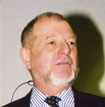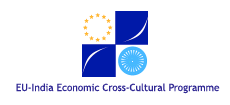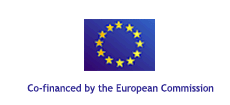
Bilateral trade relations between India and Austria have come a long way. Already in the 40s, before Independence, there seem to have been exports from Austria to India via the United Kingdom. Things then changed in the 50s. One of the cornerstones of this change was the installation of the world-famous LD-steelmaking process in Rourkela, which was a breakthrough not only technologically but also commercially and marked the starting point of a fruitful co-operation between the two countries. In the 60s, the Austrian manufacturer of railway track-laying machines, Plasser, established itself in India. Since the opening of the Indian economy in 1991, Austrian companies have been looking more and more to the Indian market. The Austrian economy can point to many major achievements and offers world-renowned specialists in powder technology, world-famous experts in laser technology, motor technology, advanced composite components for Boeing-aircraft and high quality printed circuits. As for trade relations, the balance between Austria and India is in India's favour. Austria's imports from India are higher than Austrian exports to the subcontinent. In 1998, Austria's exports to India amounted to only ATS 1,380 million. India's exports to Austria have fared much better. They rose from ATS 1,700 million in 1993 to almost ATS 2 billion last year.
The main exports items from Austria in 1999 were: machines (ATS 497.0 million), chemical products (ATS 229.6 million), transport (ATS 151.8 million), mineral products (ATS 93.8 million), metal products (ATS 76.3 million), test and measuring instruments (ATS 73.6 million), steel (ATS 59.2 million), paper (ATS 56.5 million), published material (ATS 27.6 million), non-ferrous metals (ATS 22.9 million), textiles (ATS 17.2 million) and shoes (ATS 6.6 million). Austrian technicians implemented the LD-process in India. Two years ago, the new "Corex" steel process was also supplied by Austria to India.
Imports from India in 1999 included: clothes and made-ups (ATS 614.8 million), textiles (ATS 370.9 million), shoes (ATS 221.3 million), machines (ATS 144.6 million), coffee (ATS 91.8 million), chemical products (ATS 66.2 million), travel accessories (ATS 64.7 million), leather (ATS 62.9 million), jewellery (ATS 42.5 million) and metal products (ATS 41.7 million). There has so far been no mention of the growing figures for computer equipment and software. Software is not shown in the statistics of exchange products.
There are approximately 100 technical collaboration agreements and 50 joint ventures (financial participation of Austrian companies in Indian companies) - and they are growing every year. To give only a few examples, Koch (very successful), Doka (construction industry) and Hero-Puch (the former "SteyrDaimlerPuch-Moped" is now only produced in India). AVL is an outstanding example of a successful joint venture in India (testing machines and engines of cars and trucks) while Plasser & Theurer (railway machinery) is an outstanding partner for the largest railway network in the world.
We are also identifying future areas of strength for Austria in the Indian market, such as environmental protection, water technology, treatment of waste-water, sewage, etc., hydropower, healthcare (hospital planning and supply of equipment), railways/underground-metro and infrastructure (streets, roads, etc.).
There are two main legal requirements that constitute conditions for further expansion and the extension of Indo-Austrian trade relations. These are the avoidance of double taxation and investment protection. Both agreements were signed last year but have still to be ratified. They have not yet come into force and have still to be passed by the parliaments of the two countries.
To conclude, I would like to express my gratitude to the ÖFPZ Arsenal for having organised this workshop so efficiently.

